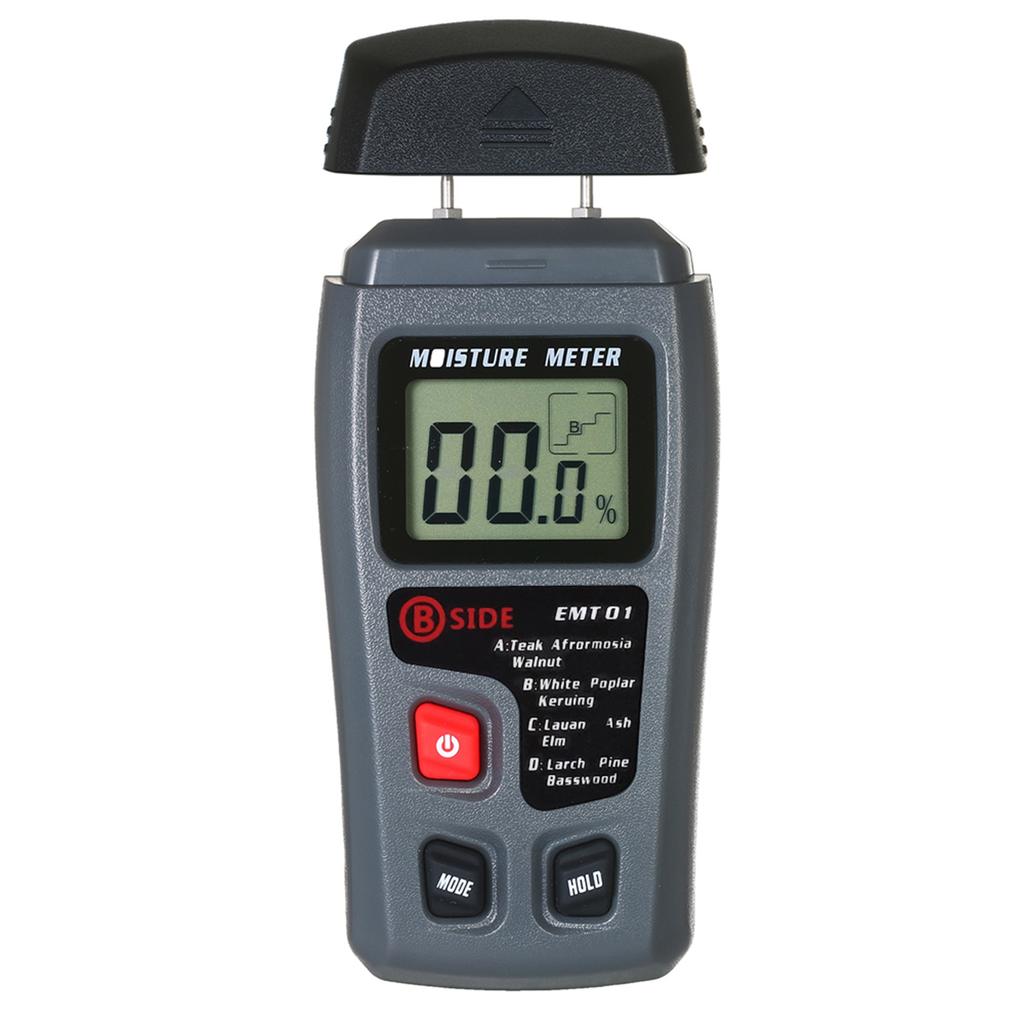Moisture meters are deceptively simple tools with big consequences. Whether you’re a woodworker trying to avoid warping, a contractor assessing a damp wall, a farmer checking grain moisture, or a DIYer troubleshooting a leak, choosing the right moisture meter makes the difference between a helpful measurement and a misleading one. Here’s a practical, no-nonsense guide to picking the best meter for your needs.
Know what you need to measure
Start by being concrete about the material and the measurement depth:
Wood and lumber: You often need internal moisture content (MC) expressed as a percent. Pin meters are common here because they give a point reading inside the wood. Pinless meters can be useful for quick scans.
Building materials (drywall, plaster, concrete): These are heterogeneous and often need surface or near-surface readings. Pinless or specialized concrete meters are a good fit.
Soil and agriculture: Soil moisture meters are designed for volumetric or relative moisture and often report different units than wood meters.
Grain and bulk materials: Requires specialized grain moisture meters that account for density and temperature.
Inspections (leaks, mold risk): You’ll want a meter that’s fast, portable, and accurate for spotting wet spots—pinless scanners are excellent for scanning large areas.
Understand the two main sensor types
Moisture meters use two fundamental technologies: pin and pinless. Some models combine both.
Pin (resistance) meters use two metal probes that penetrate the material and measure electrical resistance. Lower resistance = higher moisture.
Pros: Direct, widely used for wood MC, works on thin materials.
Cons: Leaves small holes; readings are point-specific; probe quality and contact affect accuracy.
Pinless (capacitance/radio frequency) meters use an electromagnetic field across the material to sense moisture content non-invasively.
Pros: Fast area scans, no damage, good for finished surfaces.
Cons: Limited measurement depth, less reliable on very thin or layered materials, and calibration depends on material type.
Tip: If you need both spot accuracy and rapid scanning, pick a combo meter (pin + pinless).
Pay attention to range, accuracy, and calibration
Measurement range: For wood, look for a meter that covers typical wood MC ranges (usually 5–30% for most timbers). For concrete, the ranges and units differ—ensure the meter covers the values you expect.
Accuracy and resolution: Look for specifications like ±1–2% MC for wood. Lower tolerance numbers mean better accuracy. Beware vague claims—reputable brands provide explicit specs.
Calibration and material settings: Good meters let you choose the material type (oak vs. pine, drywall vs. brick) or include material-specific correction tables. This is crucial—different materials conduct electricity or interact with fields differently.
Consider measurement depth and spot size
Pin meters measure from the probe tip inward; the depth depends on probe length. Pinless meters have a “sensing depth” (often ¾”–1″ or more) and a sensing area. If your goal is deep internal moisture (e.g., wet framing behind paneling), verify the meter’s penetration depth. For surface-only checks, a shallow depth is fine.
Features that matter in the field
Data logging and connectivity: If you need to track changes, export reports, or integrate with software, choose a meter with data logging and USB/Bluetooth.
Display & indicators: Backlit, large numeric displays and clear bar graphs or color coding (green/yellow/red) speed interpretation. Some meters show both percent and relative readings.
Temperature compensation: Moisture readings can be affected by temperature. Automatic temperature compensation or the ability to input temperature improves accuracy.
Durability and ergonomics: Rugged casing, water resistance, and a comfortable grip matter if you use the meter on job sites.
Battery life and power options: Long battery life or rechargeable options reduce downtime.
Standards and certifications: For professional use, look for meters that follow ASTM or ISO guidelines for specific materials (e.g., ASTM F2659 for concrete scanning). This helps ensure measurements are defensible.
Match meter to use case: quick guide
Woodworking and kiln-drying: Pin meter with species correction tables, ±1% accuracy, and longer probes for thick stock.
Home inspection/leak detection: Pinless scanner for fast area scans + pin probe for spot verification; good display and audible alarms help.
Concrete slab testing: Use a moisture meter designed for concrete (some are non-destructive; others follow standard test methods). Consider relative humidity probes for in-slab testing.
Agriculture/grain: Grain-specific meters that compensate for temperature and density; look for species/grain-type settings.
Soil gardening: Soil moisture sensors provide volumetric or relative readings; waterproof probes, long probes for deeper samples.
Practical tips for getting reliable readings
Understand the unit: Wood MC is percent by weight; soil meters may use volumetric units or relative scales. Don’t mix them up.
Take multiple readings: Materials vary—take several readings across the sample area and average them.
Account for temperature: Either use temperature-compensated meters or correct readings when necessary.
Prepare the surface: Remove finishes, dust, or loose material when using pin meters for more consistent contact.
Store and maintain probes: Keep pins clean and replace bent or corroded probes; poor contact causes errors.
Verify periodically: Use a known test block or reference sample to check calibration over time.
Budget considerations
You can buy moisture meters under $50 and pro-grade units for several hundred dollars. Price generally tracks features: cheap meters provide rough relative readings suitable for DIY spotting; pro meters add accuracy, calibration options, logging, and durability.
Match the price to the value of the decisions you’ll make from the readings—if incorrect moisture readings could cost thousands (e.g., in construction or agriculture), invest in a quality instrument.
Final checklist before you buy
· What material will you measure?
- Do you need invasive (pin) or non-invasive (pinless) readings — or both?
- Does the meter’s range and accuracy fit your needs?
- Are there material-specific settings or calibration options?
- Do you need data logging, connectivity, or standards compliance?
- Is it rugged enough for the environment where you’ll use it?
- Is the price justified by the cost of mistakes avoided?

